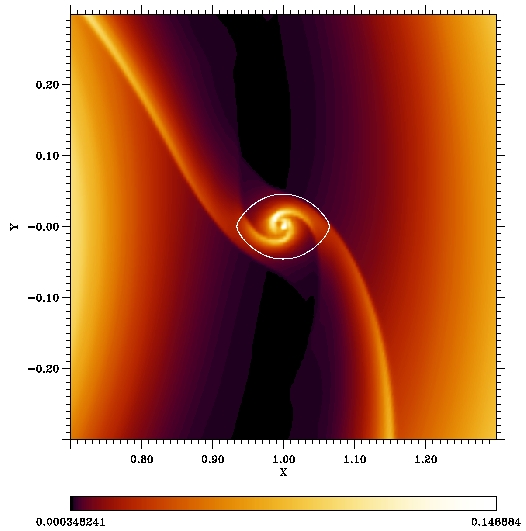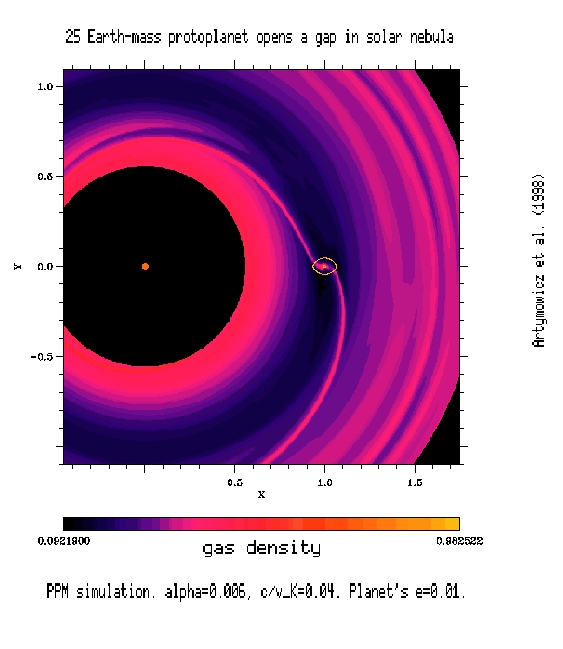
| | mass ratio µ = 7.5 · 10-5 | e = 0.01 |
| | alpha = 0.006 | c/vK = 0.04 |
| |
resol.: 0.0091 x 0.0049 | tmax= ? P |
| | dm/dt= 1.43 × (dm/dt)0 | tremove = 1.8 P |
| |
(dm/dt)0 = 3 pi Sigma nu | nu = 0.96 × 10-5 |
| - | (dm/dt)0 = 3.2 · 10-8 Msun/yr | - |
| | tm = 1.6 kyr | (or more if tremove shorter) |
| |
da/dt = -6 · 10-5 vK (inward) | ta= 31 kyr |
| |
da/dt = +0.17 · 10-5 vK (outward) | adv << grav |
| |
v = -1.4 · 10-5 vK | tvisc= 130 kyr |
| |
de2/dt < 10-7 | grav << adv |
| |
de2/dt = -4 × 10-7 (damped) | te = 940 yr |
| |
viscous, µ > 130 µEarth (violated) | thermal, µ > 65 µEarth (violated) |

Comments:
Eccentricity damped mainly by advection, and here even weakly excited by gravity.
Of course it's diufficult to disentangle the two since the wakes and streams
of matter contribute to both, with different signs.
The gap is cleared, although it isn't empty: has density of up to 0.1 $times
the unperturbed density.
Standard thermal gap opening criterion:
mass ratio>µ = 3 (c/vK)3
= 4.7 · 10-5, is violated by a factor of 2.5.
Standard viscous gap opening criterion:
mass ratio>µ = 40 alpha (c/vK)2
= 1.5 · 10-4, is also violated by a factor of 5.
Advection is, however, weaker than gravity in causing migration.
To some extent, it is so because we restrict the e-folding removal time
of gas from the inner 2/3 of the Roche lobe to be more than 2 orbital
periods of the planet. (This estimate corresponds e.g. to
a circumplanetary disk with the same temperature and viscosity as
the nebula.
| | mu = 10-5 | e = 0.01 |
| | alpha = 0.008 | c/vK = 0.025 |
| |
resol.: 0.011 x 0.005 | tmax= 100 P |
| | 0 | (by assumption) |
| |
2.0 · 10-5 vK | ta= 94 kyr |
| | de2/dt=-2· 10-6 /tdyn | te= 188 yr |

